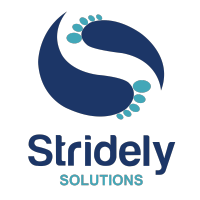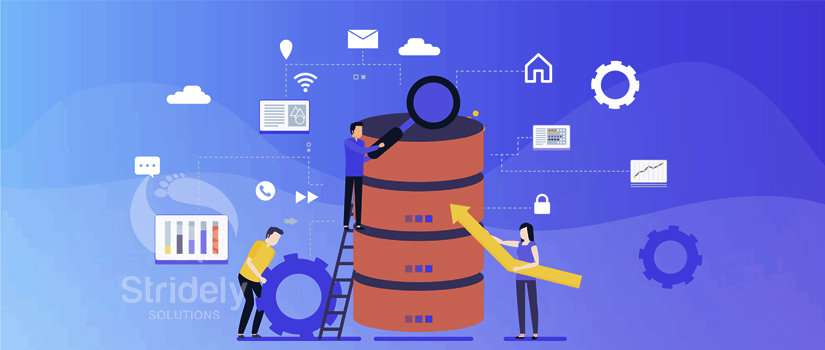Data, created for business purposes, is known as operational data and covers configurational data, master data, transaction data, and any other data. To make most of this data for further processing, data provisioning is done.
SAP offers a dedicated framework for this function that is known as ODP or Operational Data Provisioning. A part of the SAP ABAP application, ODP is capable to provide end-to-end support in workflows such as data extraction and replication.
SAP Operational Data Provisioning – Meaning and Overview
ODP or Operational Data Provisioning is the technical infrastructure used widely to support two distinct applications in a way that data extraction and data analysis becomes a smooth task. The two used applications in ODP are Operational Analytics and data extraction and replication.
Also Read: Understanding the Know-How of Statistical Analysis of the SAP BW4HANA Infrastructure
Operational Analytics is the application used for OLAP analysis implementation on application data. The analyses will only be done locally in the application system. Usage of Operational analytics demands BW configuration in the application system and can work without a pre-configured Data Warehouse. It also works without the BW system data duplication and makes direct data accessibility possible.
Data Extraction and Replication refers to the data offering to multiple external consumers like SAP BusinessObjects Data Services.
Also Read: SAP DWC: The Future of Data Warehousing
It’s a part of the SAP ABAP application system and plays a crucial role in the delta mechanism in these two application scenarios. When the delta procedure takes place, the ODP-provided data is automatically written in the delta queue with the help of an update process. Or else, it’s passed to the delta queue using the extractor interface.
Once this process is done, the targeted applications or ODQ/ODP customer comes into action to retrieve the delta data for further continuation.
ODP is functional in SAP BW/4HANA and SAP BW. Alongside, it’s highly useful to proffer data to other SAP services such as SAP Data Services or SAP HANA Smart Data Integration.
Also Read: Stay Ahead of the Competition with SAP HANA Smart Data Integration: Here’s How
ODP Framework Advantages
ODP brings multiple advantages. The top one is the immediate and direct data delivery to multiple end-users at a time that accelerates the data analysis process. Such sort of data delivery is not possible with a traditional delta queue.
Its usages also permit the end-user to directly load the data into the BW InfoProviders and bypass the Persistent Staging Area or PSA layer.
When clubbed with delta queues, ODP takes over the essential workflows like data service monitoring and saves a huge deal of time and effort.
Delta queue store the operational data in a compressed form that make data processing easier and quicker than before.
The requested or recommended data changes in a delta queue can be accessed by multiple target systems that increase the data reach.
Delta queue retains the data for a specific time and supports the data recovery as a backup is created. So, even if a cyber-attack happens on your operational data, you’ve got a recovery strategy in place.
Pre-requisites for Operational Data Provisioning
There are two aspects of Operational Data Provisioning, the ODP provider and the ODP consumer. Both these aspects should be equipped with certain minimum operational requirements, which are presented as below.
-
Pre-requisites for ODP Provider
ODP providers include SAP applications featuring ODP functionality such as SAP Business Suite, SLT, and many others. To ensure effective delivery of ODP, these ODP providers should be equipped with certain SAP ABAP Application package components like SAP_Basic<730- SAP Notes 1521883 ODP Replication API 1.0 and SAP_Basic>=730- SAP Notes 1931427 ODP Replication API 2.0
-
Pre-requisites for ODP Consumers
ODP consumers are the applications using ODP for data extraction such as SAP BW/4HANA or SAP BW. Such ODP consumers should be running on BW 7.40 SP5 and support all the databases to use ODP functionalities.
In case ODP consumers want to create and use ODP Source System in SAP
BW 7.3x target systems need to adhere to certain SAP Notes requirements.
Key Use Cases of ODP
The most common use cases of ODP are as mentioned below.
- ODP Provider (Source System) that includes SAP DataSources (Extractors), ABAP CDS Views, SAP BW or SAP BW/4HANA systems, SAP Source System via SAP SLT, and SAP HANA Information Views in SAP ABAP based Sources
- ODP Consumer (Target Systems) consists of applications like SAP BW, SAP BW/4HANA, and SAP SD.
Understanding Operational Delta Queue (ODQ)
Operational Delta Queue or ODQ is the key component of ODP and plays a crucial role to transfer data between the ODP source and ODP consumer so that the data extraction and replication process can start off. Basically, ODQ is the physical queue offered in the source system and is the replacement of RSA7. It features many additional functionalities that can access via tcode ODQMON.
The data stored in ODQ is in highly compressed form and is retained for a while, as a part of the backup strategy.
ODP consumers have the freedom to decide for how long the ODQ will retain the data. By default, it is retained for 24 hours.
There is three retention priority awarded to the end-users. Here is what we meant.
- Recover a canceled delta process
- Recover data having low relevancy
- Recover data having medium relevance
Because of this functionality, it’s easy for ODP subscribers to re-load the data anytime and anywhere. In ODQ, multiple data request capabilities are offered. For instance, subscribers can request multiple data types from the source.
Additionally, subscribers are allowed to ask for a snapshot or full copy of data. This functionality is enabled in ODQ, integrated with all the BW DataSource, and doesn’t ask for any activation or added subscription.
In case one tries to change the data or make a delta request, delta initialization is required. This functionality is supported by the leading BW DataSource and can be activated by a Push or Pull mechanism.
Delta Types for ODQ
The two key types of delta types used in ODQ are as mentioned below.
- Delta Type ‘D’ – It refers to the delta records, written by SAP application directly into ODQ PUSH. This delta data type is either stored in ODQ distinctively or is written in delta data records groups. In every situation, delta data records are present in ODQ for easy accessibility by the SAP source system.
- Delta Type ‘E’ – Delta type E is the second delta type and refers to the data that ODQ extractors offer on request or demand. The term is applicable to the data record that is placed in ODQ by the extractor and then further transferred to the SAP target from there. This delta record establishes the fact that there is no relationship between ODQ and corresponding subscriptions.
When Delta type D or Push mechanism is into action, there will be direct data writing from the application into the delta queue. From here onwards, data will be accessible by the subscriber. The real-time example of this process is All Logistic DataSources.
When Delta type E or Pull mechanism is into action, ODP will analyze or extract the delta records using extractor on request. All FI data sources are what work in this manner.
ODQ Tables
ODQ uses three kinds of tables to store the delta requests or data. The first kind of table is ODQDATA_C which contains compressed initial request data.
ODQDATA_F is the second table type table that features compressed full request data. Lastly, we have an ODQDATA table that consists of compressed delta request data.
The Right Kind of Assistance Is By Your Side
Stridely Solutions have earned the unmatched competency and expertise in SAP HANA databases and SAP HANA Cloud Platform. We can guarantee for 100% satisfaction and customized implementation when you bring us on board.


